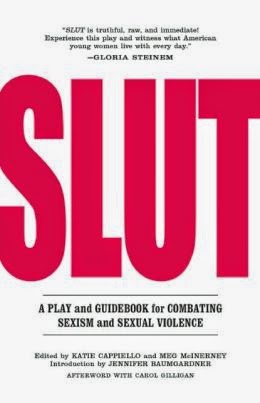Eating the Cheshire Cat by Helen Ellis is the first real YA I ever remember reading that wasn't a classic. It's also the first time I read a book review in a magazine and actively sought out the book in question. Before Eating the Cheshire Cat I'd never gone to a store looking for a specific title that wasn't either a) Nancy Drew or b) assigned school reading. As a result this novel, Helen Ellis' debut, truly was my introduction to the world of making my own reading choices and developing my own unique literary taste. I love this book is what I'm saying. It's got dark comedy blended with Southern Gothic themes. It's got real teenage girls struggling to mature in the extremely homogenized and image-centric South - something I was struggling with a lot when I first read it. I clearly remember being intrigued by the Wonderland reference in the title (Alice fangirl for life!) and it's crazy to me that this book only came out in 2001 because I feel like I read it before 11th grade, which clearly is inaccurate, but this book was so momentous to me that it seems like it's been part of my life for much longer. My little sister currently has possession of my coveted copy, long overdue since I spent a good few years trying to prevent her from reading it, convinced the more adult themes would be exposed to my mother and she would try and keep me from reading more realistic YA (which is pretty crazy when you consider that the same year I was assigned Ellen Foster and The Poisonwood Bible as school assignments...). And I am now going to stop blathering on about how much I adore this dark and twisted coming of age story and how life-changing/shaping it was for me because I will just keep on talking and we'll never actually get to the discussion about the Book Style and Brandi just stop talking just type a period and start a new paragraph come on you can do this...
This is a hard, I mean hard book to Book Style. That's why, besides it's apparent nearness and dearness to me, I haven't tackled it before now. You can thank my wonderful sister for the prompt. I wanted an outfit that I could see a young woman of good social standing in the South wearing, needed it to have at least some tie-in to the book (there's not a lot of blatant symbolism that would work), and I needed to match a neon green, orange and floral cover?! All in all, I'm pleased with the result. This maxi dress is way beyond my budget reality but I will now be actively looking for a suitable lookalike. I added a light cardigan on top in "Fire" because it matched the goldfish and it also ties in to the story's fiery conclusion. "Sarina Billy" slingback heels keep the look a little dressier while referencing one of three main characters, Sarina. The "Vendetta" purse also ties into the twisted relationship between Sarina and another main character, Bitty Jack. An axe ring and earrings are another nod to Sarina, her mother, and the shocking opening to Eating the Cheshire Cat where a (deliberately) drunk sixteen year old Sarina allows her mother to smash her crooked pinkie fingers with an axe so that they will be reset straight, thus eliminating her one physical imperfection. A "Roll Tide" necklace and an Alabama necklace reference the novel's setting. The "Southern Belle" lipstick, "Girls Just Want to Have Fun" nail lacquer should be pretty obvious references - it's a book about three Southern belles after all. I tossed in some cat-eyed sunglasses because I think sunglasses are a crucial part of any wardrobe and they're catty, just like Nicole (the third main character), Sarina, and Bitty Jack.
I wholeheartedly endorse this novel. Just don't confuse Southern Gothic with goth. For that matter you probably shouldn't confuse Gothic with goth when it comes to literature, or you, like many disgruntled reviewers, will be confused and disappointed.













